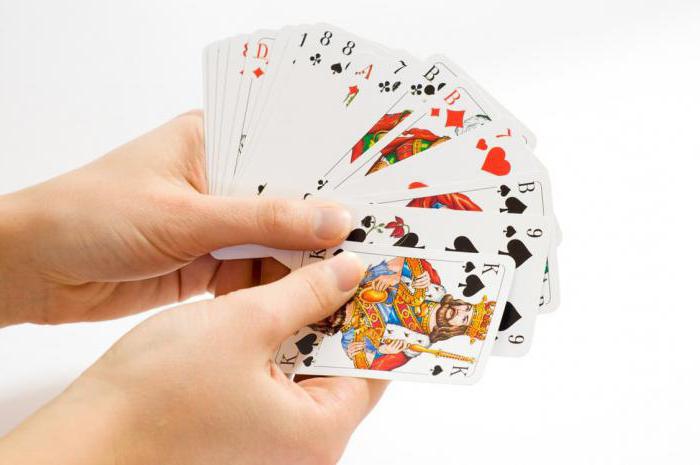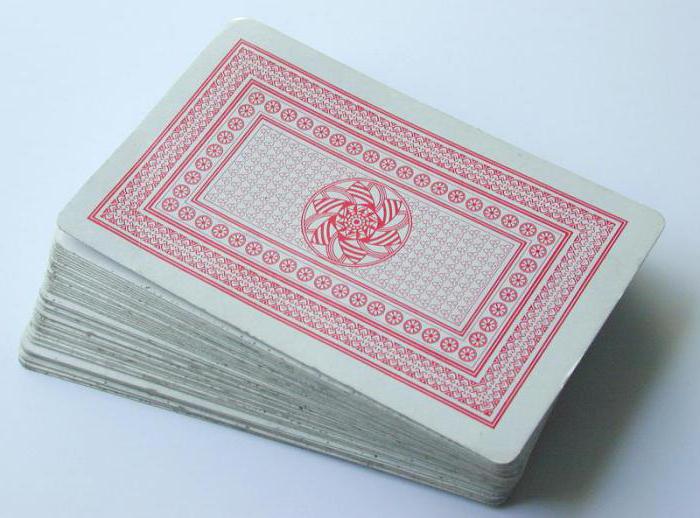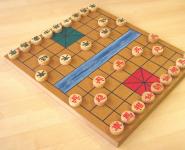Rules in the game "Fool": the main varieties
The card game "Fool" is considered the most popular in the territory of the former USSR. Time decided to hide the name of its author, but it is believed that it appeared in the 19th century in Russia. The aristocracy was skeptical about the new entertainment. But the common people liked it. This explains the colloquial name: lost - it means "remained in the cold." In the Soviet Union, her popularity increased even more. Moreover, the rules in the game "Fool" began to be supplemented. So, along with the classic version, new varieties began to appear.
Basic features of the game
Despite the huge number of varieties of the game (and there are more than 50 of them), they mostly obey the general rules. Usually they use a deck of 36 cards, sometimes - from 52 (54 without two jokers). The task of each participant is to get rid of all the cards before the opponents. Whoever stays with the cards is the “fool” (just don’t be offended, here it’s just a playful expression).
Now let's look at the basic rules of playing the Fool. Minimum two, maximum six people play cards. Each player must have 6 cards in their hand. The top (more rarely - the bottom) card of the deck is revealed, this is a trump card. This suit has an advantage over the others. If six players take part, then the entire deck is dealt, and the last card is assigned to the trump card. According to tradition, the loser is appointed as the distributor, and for the first time he is determined by lot.
Simple "Fool"
The rules in the game "Fool" are quite simple. The player with the lowest trump goes first. If there is no given suit in the hands, they decide on the lowest card. When there are more than two players, they go clockwise, that is, to the one sitting on the left. He plays one or two cards of the same value. The second player must beat them off. This means that he can block them with a card of the same suit, but higher in value, or a trump card. A trump card can only be beaten by a trump card of greater value. If the cards are beaten off, they go to waste, and they are not used until the end of the game. It is forbidden to open the discard to find out which cards are already out of play. If the player could not or did not want to beat the move, he takes all the cards from the horse - these are the rules in the game "Fool".

Then the players draw up to six cards from the deck. As a rule, the one who walked first takes, then the rest of the participants in a clockwise direction. But sometimes the batsman gets it first, so it's best to agree on this in advance. If the player fought back, the right to move is given to him. If not, he skips the move, and the person sitting on the left will “attack”. Play continues until the entire deck has been dealt, including the trump card. The player who fails to fight back and remains with the cards after the last round is considered the loser. A simple "Fool" is the main version of the game, a kind of framework on which additional rules are "tuned".
"Fool Fool"
This variety is so popular that many consider it to be the basic one. The rules in the game "Fool Fool" largely repeat the simple version. But the main feature is that the rebounding player can be thrown cards. What does it mean? When they looked like a player and he fought back, he is thrown cards of the same value that are involved in this horse. If he overlaps the cards, they go to waste. If not, he takes the whole round and, accordingly, misses the move. The one who walks throws first, and then the rest of the participants from left to right. It is forbidden to throw up more than 6 cards, because then the player will have nothing to fight back.

"The Fool of Translation"
The rules of the game in the "Translation Fool" are a little more complicated than the previous ones. But it makes the game more interesting and reckless. If a participant cannot or does not want to fight back, he can transfer the hand to the next player. To do this, he must put a card of the same value on the table. The second player will have to beat off two cards already: transfer and transfer. If he has a suitable card, he can translate the move. If the required card is not available, he takes the hand.
There is another option. Here, the rules of the game in the "Translated Fool" are supplemented by the ability to throw cards. When a player beats a move, he can throw another card. If he has nothing to beat, he can transfer the whole round to the next player. You can only transfer with a card of the same value as the last tossed; beaten are not taken into account. But if the second participant does not fight back, he will take all the cards.

"Japanese Fool"
Another interesting variation is "Japanese Fool". The rules of the game are slightly different from the classic ones. Firstly, you do not need to assign a trump suit - it can only be diamonds. Secondly, spades are not beaten off by a different suit. Otherwise, the usual rules apply.
"Pair Fool"
4 or 6 players can participate, which are divided into pairs. In this case, the partners do not sit next to each other, but opposite each other. In general, the rules are the same as in the "Throwing Fool". But, of course, you can’t go to your partner or throw cards at him. You can only attack the enemy.

The goal of the game is not just to be the first to get rid of the cards, but to help the partner “fill up” the opponents. If one member of the team left the game, and the second remained with the cards, then both of them are considered losers. The rules of playing "Fool" in pairs are complicated by the fact that partners are forbidden to help each other fight back. They can only throw cards to opponents. The team with all members out of the game wins. If one player from each pair remains, they continue to play according to the rules of the usual "Throwing Fool". If after the last deal all the players got rid of the cards, a draw is declared.
Conclusion
There are different rules for playing the Fool. Both children and adults play cards, so new versions are constantly appearing. But from such a deviation from the norm, the entertainment loved by all does not lose at all. On the contrary, everyone can find a suitable option or create a completely new one.


